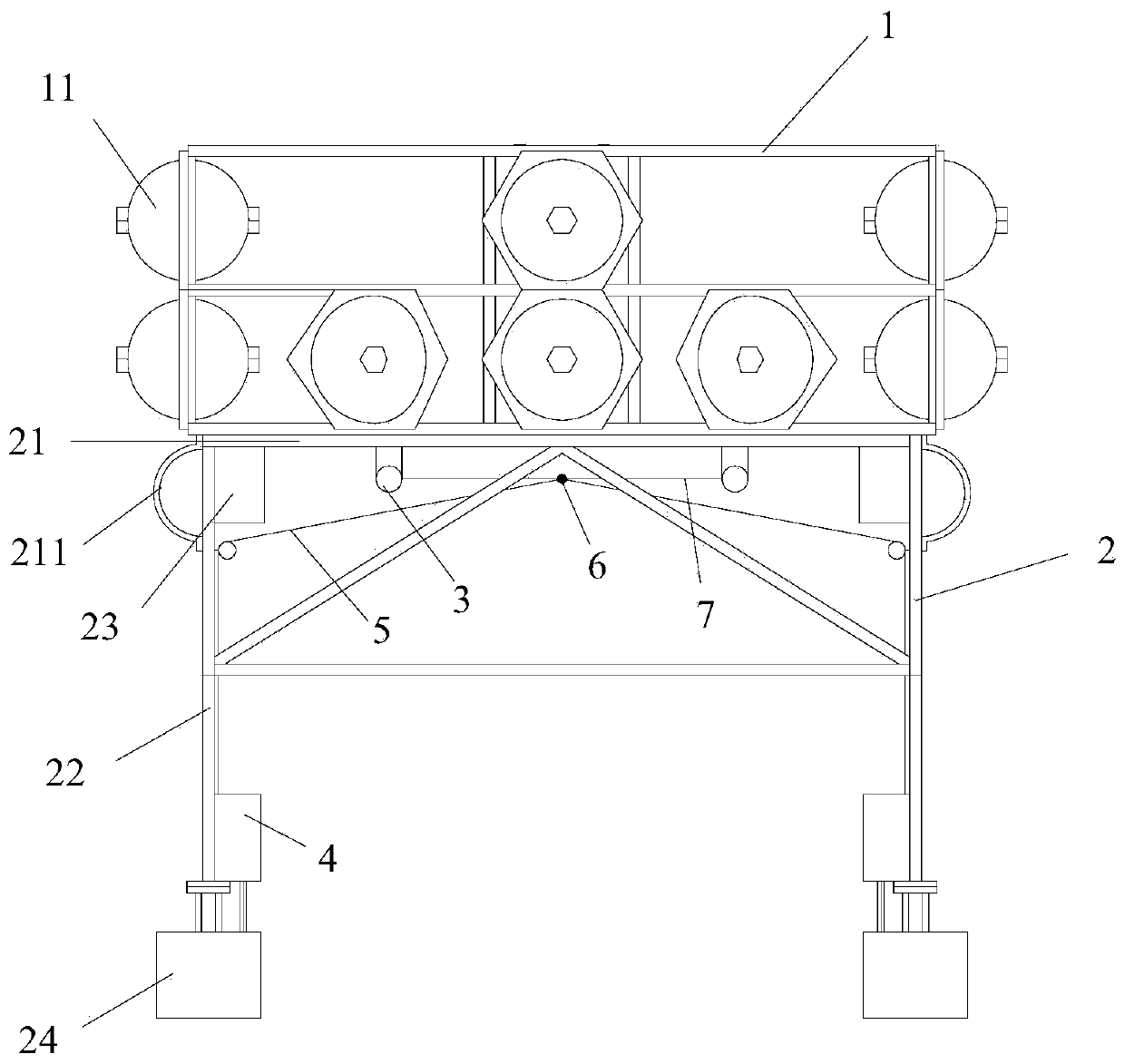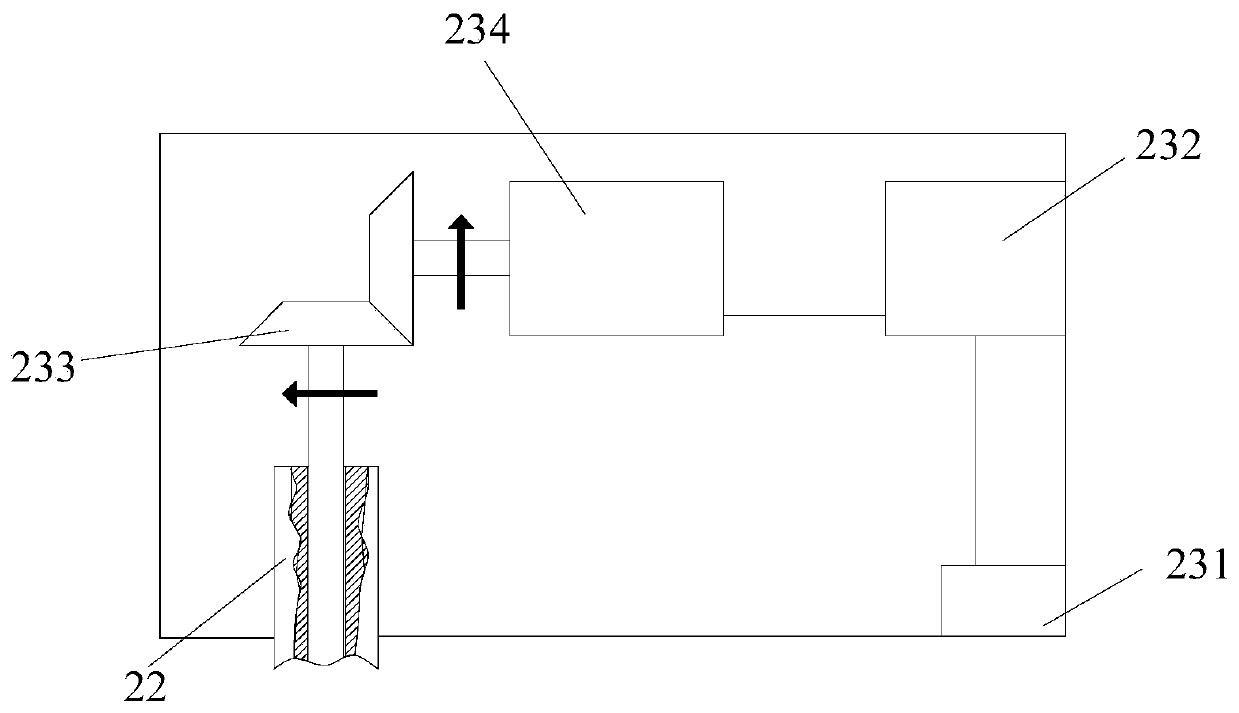Self-adaptive seabed lander based on load-rejectable foot pads
A lander, self-adaptive technology, applied in ships, special-purpose ships, underwater ships, etc., can solve problems such as recovery failure and inability to achieve self-adaptive leveling, reduce manufacturing and processing costs, reduce overall weight of equipment, and improve reliability sexual effect
- Summary
- Abstract
- Description
- Claims
- Application Information
AI Technical Summary
Problems solved by technology
Method used
Image
Examples
Embodiment Construction
[0053] The present invention will be further described below in conjunction with specific examples.
[0054] Such as Figure 1-6 As shown, this embodiment provides an adaptive subsea lander based on jettisonable foot pads, including a buoyancy frame 1, a support mechanism 2 and a release mechanism.
[0055] The buoyancy frame 1 is an open cylindrical floating ball frame that can be used to install various scientific instruments. The floating ball 11 is fixed on the frame by bolts and tethers. Greatly increase and facilitate the installation and disassembly of floating balls and various scientific instruments.
[0056] Support mechanism 2 includes:
[0057] The platform frame 21 detachably assembled with the bottom of the buoyancy frame 1, after assembly, the vertical center of gravity axis of the buoyancy frame 1 coincides with the center of gravity axis of the supporting mechanism; the buoyancy frame 1 and the platform frame 21 are fixedly connected by bolts, which is conve...
PUM
 Login to View More
Login to View More Abstract
Description
Claims
Application Information
 Login to View More
Login to View More - R&D
- Intellectual Property
- Life Sciences
- Materials
- Tech Scout
- Unparalleled Data Quality
- Higher Quality Content
- 60% Fewer Hallucinations
Browse by: Latest US Patents, China's latest patents, Technical Efficacy Thesaurus, Application Domain, Technology Topic, Popular Technical Reports.
© 2025 PatSnap. All rights reserved.Legal|Privacy policy|Modern Slavery Act Transparency Statement|Sitemap|About US| Contact US: help@patsnap.com



